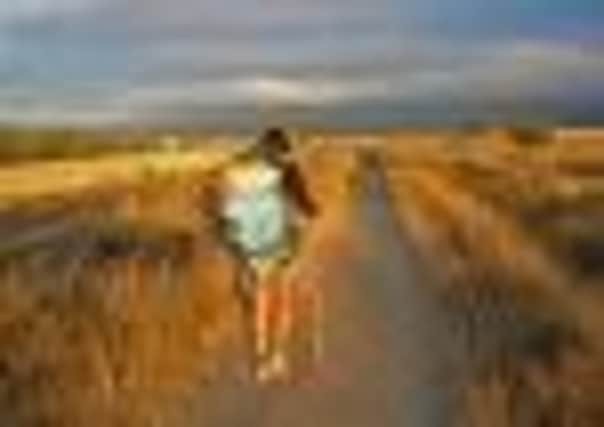Pilgrims’ progress


People flock in their thousands to the lush northern coast of Spain as part of the Camino de Santiago pilgrimage, popular since Medieval times. Bilbao is the largest city in the Basque country and has redeveloped itself from a rough hub of industry to a modern city, and the change of image is reflected in the attitude of the people who seem super-keen to prove the city’s cultural and green credentials.
The makeover has been driven since 1997 by the Guggenheim Museum, a curvy metallic structure which sits on the south bank of the river Nervion. Two minutes away was our classy, art-themed Hotel Miro.
Advertisement
Hide AdAdvertisement
Hide AdThe Guggenheim houses a permanent selection of modern art, as well as temporary exhibitions of paintings, photography and installation art. The entrance fee and cafe are a bit steep by Spain’s standards, but value comes from the free tours around the gallery by informative guides, who look like works of art themselves in their chic monochrome uniforms.


Bilbao does tapas as pretty as a picture too, and on one hazy evening we lost ourselves among the Siete Calles, a maze of seven pedestrianised streets in the old town where the bars specialise in pintxos, bite-size treats of varying complexity to accompany your beer.
Compared to the bustle and optimism of Bilbao, Llanes – where we spent two nights – was positively bucolic. The art-loving owners of the Hotel El Babu have furnished their comfortable guest house with photography, gallery catalogues and a modern decor accented with acid colours. The view from the ceiling-to-floor window of our charming bedroom was like something out of The Sound of Music: all we could see were the verdant slopes of the Picos de Europa national park and the hotel’s garden and vegetable patch below. And we could hear nothing other than the odd tinkle of bells from the cattle grazing nonchalantly nearby.
We eventually willed ourselves to leave the comfort of our room and, against the advice of our friendly hosts who warned the settling fog would hamper our hiking attempts, we took to the hire car to venture up into the hills. We should have known something was up when we realised we could only see one foot ahead of us as we drove to the area’s viewing point – noted for its 360-degree view of the hills and the coast – or when we saw just one other car at the visitor centre. But our spirits were still high as we trundled off up the path in search of fresh air, exercise and the beautiful views we had heard so much about. After 10 minutes we realised we could have been walking anywhere, so thick was the fog, and we weren’t sure what the cow bells we could hear were attached to.
Advertisement
Hide AdAdvertisement
Hide AdAfter 15 minutes, we started to feel disorientated and had a scary moment when we weren’t sure we could locate the car. And when we did find it and start our approach back to the hotel like disgraced children we saw the cows were bulls.
Such is the climate of that area that two hours later we were lying on the white sands of a nearby beach, laughing about the incident, but the cow bells we could hear from our room that evening were considerably less comforting than they had been the night before.
Our next stop was a quirky inland town called Oviedo. The film director Woody Allen fell in love with this place when he first visited, and featured the area in his film Vicky Cristina Barcelona. The people here are fond of him too, and have paid tribute by erecting his statue on one of their main streets.
Allen has described the statue as “one of the great mysteries of western civilisation” but is puzzled by the fact that the statue’s glasses are regularly blow-torched off in the middle of the night.
Advertisement
Hide AdAdvertisement
Hide AdAs big fans of his films, we larked about posing for pictures then made our way to the Cider Boulevard, so named because of its abundance of cider bars. We had been warned not to dress smartly because the local way of pouring the cider is as messy as it is fun. The bar we chose was the perfect backdrop – a real spit and sawdust joint. Sure enough the waiters, though skilled at free-pouring the cider from a great height to add fizz to the heady local brew, did still spill a bit here and there because local tradition dictates that they are not allowed to watch what they’re doing.
The final destination of our journey did not let us down either. Only people with the hardest of hearts could fail to be moved by the sight of pilgrims reaching the Cathedral of Santiago – where Saint James is said to be buried – after weeks of walking. Around the impressive Baroque-style building groups of pilgrims young and old worship together after a taxing but spiritual journey, and nearly everyone is crying. It was a humbling sight after our super-easy jaunt along the coast, and maybe next time we’ll swap the car for hiking boots and do the journey the hard way.
Getting there
Lisa Williams travelled to northern Spain with Easyjet which offers return fares to Bilbao from £80 from Manchester. Brittany Ferries sail twice a week from Portsmouth to Bilbao, with return fares from £137 per person. Inquiries 0871 244 1400.
She stayed at Hotel Miro in Bilbao which offers overnight B&B during 2012 from £100 for standard double room. Inquiries 003494 6611880 or email [email protected]
Advertisement
Hide AdAdvertisement
Hide AdIn Llanes, Hotel El Babu offers double rooms from £80. Inquiries 0034 985 853 272 or email [email protected]
Car hire was arranged by Europcar, which offers car hire in Bilbao from £106 per week. Reservations 0871 384 0004 and www.europcar.co.uk, or through any branches.